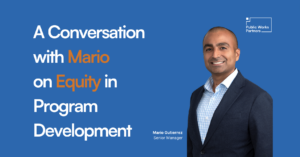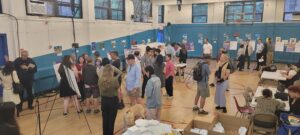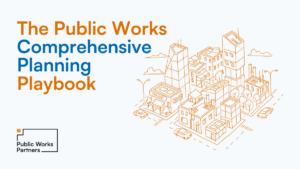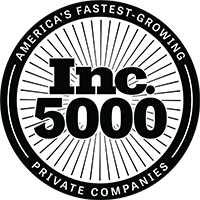For the third installment of #10YearsofPublicWorks, we spoke with Gaspar Caro, Partnership Director at the Lower East Side Employment Network.
In 2006, as developers began looking at the Lower East Side, Chinatown, the East Village, and the Two Bridges neighborhood with increasing interest, community members David Garza, President & CEO of Henry Street Settlement; Susan Stetzer, Community Board 3 District Manager; and Michael Zisser, Executive Director of University Settlement and CB3 member, saw an opportunity for a collaborative workforce development entity that would serve as a local hiring vehicle for the neighborhood. David Garza reached out to workforce development players across lower Manhattan to pull together an affinity group of 5 providers, forming the Lower East Side Employment Network (LESEN).
Initially, the Network served as neighborhood companies’ single point of access to the Partners’ candidate pools. However, this model began to change in the aftermath of the 2008 recession, when there was a shift from too few workers to too few jobs. “The recession’s change in demand helped the organizations realize the capacity to switch toward a single point of access to companies,” said Gaspar Caro, who has been with LESEN since 2012 and is now the Network’s Partnership Director.
“Following the 2008 recession, economic development began to ramp back up and the Network’s founding principles—collaborate rather than compete, in order to create a strategically efficient single point of access—were needed more than ever,” David Garza explained. In 2011, Public Works Partners was brought on to “provide a robust quantitative assessment of what was actually happening in the neighborhood, beyond the Partnership’s anecdotal observations,” Caro said. Public Works identified emerging sectors that presented promising fits to LESEN’s job seekers, analyzed labor market and census data, and incorporated input from workforce service providers outside of LESEN.
“It was an interesting mix of digging in to prove what labor market existed in the neighborhood and looking at where neighborhood residents actually worked. It was important to understand the employment trends from these two directions,” Celeste Frye, CEO & Principal of Public Works said of the project.
The deepened understanding of the labor market provided by the Public Works report allowed LESEN to develop a roadmap of the sectors and businesses it made the most sense for them to target. “The report gave us more confidence in the Network’s mission and informed our recruitment efforts, ultimately making it more saleable to local businesses,” Caro said.
In its current form, LESEN is the local hiring vehicle for Community District 3. This means that whenever an entity comes before the board, the entity is recommended to work with LESEN to bring employment opportunities to neighborhood residents. A team of workforce programs from the Network’s members is then brought together by LESEN. This process facilitates collaboration among the Partners rather than the competition that is traditionally seen in workforce development.
LESEN works behind the scenes to strengthen the operations and growth of their Partners. “If you’re a job seeker, you don’t really interact with LESEN’s core team,” Caro said. “There’s already an infrastructure for all of those programs. Instead of providing frontline staff services, LESEN saw value in having someone who could facilitate conversations between Partners.” LESEN’s unique position has allowed them to formalize communication and collaboration channels, increasing the know-how and capacity of the Network.
How has the COVID-19 Pandemic impacted this model?
“A year ago,” Caro said, “it was a clear trajectory from what Public Works had identified back in 2011. Now, it’s all up in the air.” Construction, hospitality, and retail were all seeing tremendous growth in the neighborhood, just as the Public Works report had predicted. Now, these are some of the industries most impacted by the pandemic and economic downturn.
“Now we’re just trying to figure out how a central entity membership program can be of the most support to our members,” Caro said.
The pandemic has raised many questions for LESEN and the neighborhood as a whole. For instance, the two largest sectors last year were hospitality and retail. Now that they are some of the hardest hit industries, the growth sectors that were eager to accept training program graduates have evaporated.
However, the upheaval of the past few months has not caused LESEN to lose hope. They are looking to construction, healthcare, and tech as potential leaders of future growth in the neighborhood.
“How do you turn a 10,000 square foot retail operation into something useful as people continue to shelter in place?” Caro asked. “Retrofitting and lending are going to be two really important roles as we figure this out.”
LESEN is also looking internally to reevaluate and maximize their value add. Even pre-pandemic, a decrease in available land across the whole city, but especially on the Lower East Side, meant that job-creating development was showing signs of slowing down.
“We’re thinking about a incorporating an overlaid training network into the LESEN program,” Caro said. “We’re thinking about how we can be useful.”
Whatever changes do end up coming out of this time, LESEN remains committed to focusing on and supporting Community Board 3.





 Public Works Partners is a WBE/DBE-certified urban planning and consulting firm. Our expertise lies in creating innovative, equitable, and sustainable solutions to complex problems.
Public Works Partners is a WBE/DBE-certified urban planning and consulting firm. Our expertise lies in creating innovative, equitable, and sustainable solutions to complex problems.